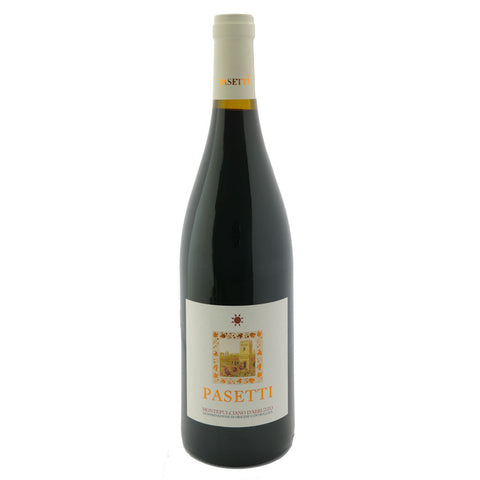Brunello di Montalcino
By Tuscany
The best product of the Sangiovese grapevine, Brunello di Montalcino is one of the greatest aged Italian wines, an important wine for the most important meat dishes, and inasmuch as the pride and joy of Italian oenology, it is essential to safeguard its typicality and taste.
Compared to other glorious wines, the history of Brunello di Montalcino is a relatively recent affair, as its origins began in 1888 by Ferruccio Biondi. Its success was not immediate. Just think that at the Fair of Siena in 1933 only four samples of Brunello were presented, and only two were from producers that bottled regularly.
Only in the postwar period is there evidence of the growing success of this wine, which has been overwhelming since the 1980s. In 1965 there were twenty-five producers for a total of 800,000 bottles, while in 2004 there were about 250 for more than 6.5 million bottles, and today there are 300 producers and 8 million bottles.
In this growth, sustained by the market, there is an underlying problem: the DOCG label does not differentiate between the historic vineyards and the more recent ones, which are often in the bottom of the valley and certainly less suited. One naturally cannot expect that all of the 2,000 hectares of Brunello vineyards will give the same results. It is allowed to bottle a Brunello di Montalcino with an indication of the vineyard or the slope, but we are light years behind the classifications of Bordeaux and Burgundy, and at a considerable distance from what is being done, more with Barbaresco than with Barolo, in the Langhe area.
To this must be added the dispute between traditional producers and those who want to adopt more modern techniques. Traditionally, the Brunello di Montalcino , is aged in large oak casks—the most valuable oak comes from Slavonia—for less than 50 months, 62 for the Reserve.
It is an austere wine, hard, with great personality, which acquires complexity and pleasantness with aging. Since the Sangiovese grapevine has few anthocyanins, its color is rather spent.
To meet the demand especially from the American market, many manufacturers have used, in compliance with the law and the rules of production, techniques that have produced a Brunello that is softer, more concentrate, and more immediately enjoyable.
Aside from those companies that they have not complied with production specifications that are still, along with those of Barolo and Barbaresco, among the most severe and restrictive in the world, the problem is not so much of taste, but of respect for the typicality of one of the flags of Italian oenology.


